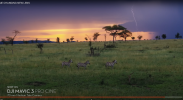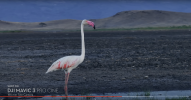It's about the maximum take-off weight the manufacturer of the drone specifies at the time of applying for the label, AFAIK. So
if DJI makes a new battery and gets the drone accepted for a new label, the owner needs to do the same steps as they need to retrofit the 'OG'
M3. With the consequence that the drone possibly can't take-off with the original battery if it's located in Europe.
'Drone policing' has become very easy using Remote ID, but I have a strong opinion about that. It isn't necessary for law enforcement to weigh the drone or check for labels, they can catch you in flight - from a distance. So I wouldn't recommend to just DIY own labels as someone mentioned earlier in this thread.
That being said - I won't upgrade for the time being. Let them first introduce the SDK for the
M3 series, as they - somewhat - announced and retracted later. But that's for another topic.











